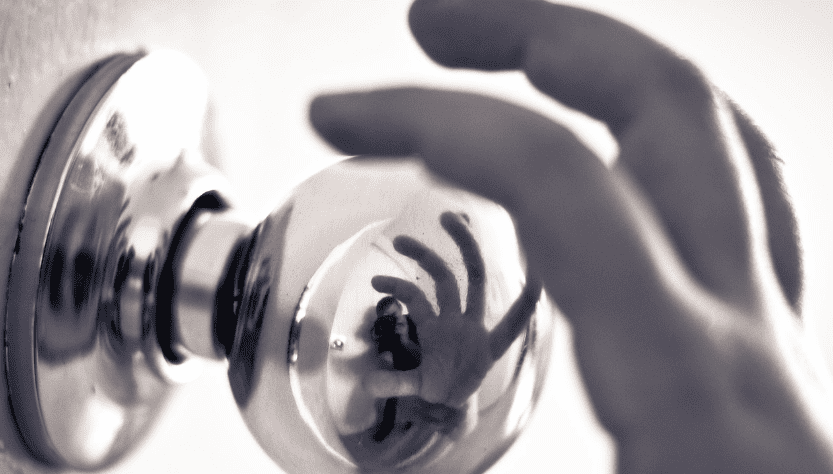
Experiencing a sudden jolt when touching a metal object is a common phenomenon that puzzles many people, but it’s actually pretty simple to understand. The “small electric shock” you’re feeling occurs due to the discharge of static electricity that builds up on the body. Static electricity results from an imbalance of negative and positive charges in objects. When two objects come into contact, electrons can transfer from one to the other, making one object negatively charged and the other positively charged.
The shock is felt when a charged body touches a conductor, such as metal, through which electrons can move freely. Metal’s conductive properties allow for the rapid movement of electrons, leading to the sudden release of energy that we perceive as a shock. This phenomenon is more likely to occur in dry conditions, where the air is less conductive, allowing for greater static buildup on the skin’s surface.

the Mystery of Static Shocks
If you find yourself getting shocked every time you touch metal objects, you’re not alone! This annoying phenomenon is caused by static electricity. Let’s break down the science behind static shocks and what you can do to reduce them.
What is Static Electricity?
Static electricity is a buildup of electrical charge on an object’s surface. These charges can be positive or negative. Unlike the electricity flowing through circuits, static electricity is stationary until it is discharged.
How Do Static Shocks Happen?
Here’s the process behind that annoying shock:
- Charge Buildup: Friction between materials with different affinities for electrons causes an electron transfer. For example, your shoes rubbing against the carpet can make you negatively charged.
- Charge Imbalance: Metal is a great conductor; electrons move freely through it. When you touch a metal object with excess electrons, the charge wants to balance out.
- The Shock!: Electrons rapidly jump from your body to the metal object. This sudden flow of electrons is the sensation you feel as a shock.
Factors that Influence Static Shocks
- Dry Air: Low humidity allows charge to build up more easily, increasing the chance of shocks.
- Clothing: Certain fabrics (like wool or synthetic materials) are more likely to transfer electrons and create static.
- Type of Material: Metals are notorious for transferring static shocks, but many materials can hold a charge.
How to Reduce Static Shocks
| Tip | How it Works |
|---|---|
| Use a humidifier | Increases air moisture, making it harder for static charge to build up. |
| Wear natural fibers | Fabrics like cotton or linen are less likely to generate static. |
| Touch grounded metal first | Discharge any potential static buildup before touching more sensitive objects. |
| Use an anti-static spray | Apply to carpets or clothing to help dissipate static. |
It’s important to note that while annoying, typical static shocks are completely harmless.
Key Takeaways
- Static electricity occurs due to an imbalance of electrical charges in materials.
- Electric shocks from metal happen when static charge is rapidly transferred through contact.
- To prevent shocks, one can manage the buildup of static electricity and modify their environment.
The Science of Static Electricity
Static electricity occurs when electric charge builds up on the surface of a material. It happens when electrons transfer from one object to another.
Understanding Charge and Discharge
Objects can gain or lose electrons through contact with other objects. This leads to a difference in charge between them. When they have different charges, an electric current can flow, or discharge, from one to the other. This is often felt as a shock.
Role of Air and Humidity
Air usually acts as an insulator, keeping electric charges separate from each other. However, when the air is humid, moisture can allow charges to move more easily through the air. This can make it less likely to receive a shock because the charges can dissipate into the moist air.
Conductive Materials and Insulation
Some materials are more conductive than others, meaning they allow electrons to move through them more easily. Metals are good conductors and can transfer electrons quickly, often resulting in a shock when touched. Insulators, such as rubber and plastic, do not conduct electricity well and can help in preventing static shocks.
Preventing and Managing Electric Shocks
Electric shocks can startle and inconvenience anyone. This section provides ways to manage and prevent such occurrences, especially when touching metal objects.
Practical Tips to Reduce Static Buildup
Static electricity forms more easily in dry air conditions. People can take simple steps to reduce the likelihood of shocks. They should keep their environment moderately humid. This is due to moisture in the air helping to dissipate static charges. Using a humidifier can add the necessary humidity to the air. One should apply moisturizer to their skin to increase its conductivity, which can also help minimize static buildup.
On the materials front, shoes with leather soles are less likely to generate static electricity compared to rubber-soled footwear. Clothing made of cotton is a better choice over synthetic fibers, wool or fur, all of which can contribute to a higher static charge. One might treat their clothes with dryer sheets or use anti-static spray to further reduce static electricity.
Understanding Seasonal Variations
Temperature fluctuations can affect static electricity. In winter, the air inside homes often becomes dry due to central heating. This increases the chances of getting shocks. In contrast, summer brings higher humidity and a natural decrease in static buildup. Understanding this seasonal impact allows people to take proactive measures. They could use air conditioning less and opt for other cooling methods that do not reduce humidity levels.
For year-round prevention, one can regularly use a humidifier. This maintains a consistent level of moisture in the air. It proves effective against the dryness brought on by temperature-control systems.
Frequently Asked Questions
This section addresses common inquiries about static electricity and how it causes shocks when touching metal objects. It offers practical advice for preventing and managing static shocks effectively.
What causes an electric shock when I touch metal objects?
Static electricity results from an imbalance of electrical charges within or on the surface of a material. When you touch a metal object, the excess electrons that build up on your body rapidly move to the conducive metal, resulting in a shock.
How can I avoid getting shocked by static electricity when touching metal?
One can reduce the chance of getting shocked by wearing shoes with leather soles, moisturizing regularly, and keeping the indoor air humid. Some fabrics and flooring materials contribute less to the buildup of static electricity, so consider their selection as well.
Is there a way to prevent static shock in cold weather conditions?
In colder and drier climates, static shock is more common due to low humidity. Using a humidifier in your home or office can help prevent static buildup. Wearing natural fibers instead of synthetic ones also helps.
What methods are available to dissipate static electricity from the human body?
Grounding oneself regularly by touching non-insulated metal objects can dissipate static electricity. Wearing anti-static wristbands or grounding mats can also reduce the likelihood of a shock.
How can contact with another person result in an electric shock?
When two people have different levels of static charge and they touch, a small electric current may pass between them, causing a shock. This happens when electrons are transferred from one person to the other.
What exactly is the phenomenon known as static shock?
Static shock is the sudden discharge of electricity between two electrically charged objects. This discharge can cause a momentary sharp sensation or a visible spark. Static shocks are common and usually harmless but can be surprising and uncomfortable.





